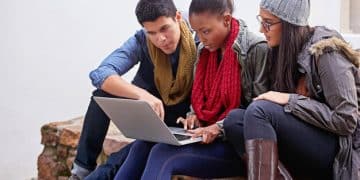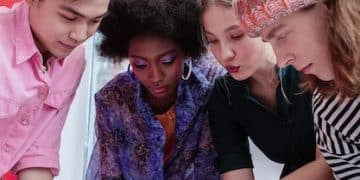The Maker Movement: Sparking Creativity and Innovation in US Schools
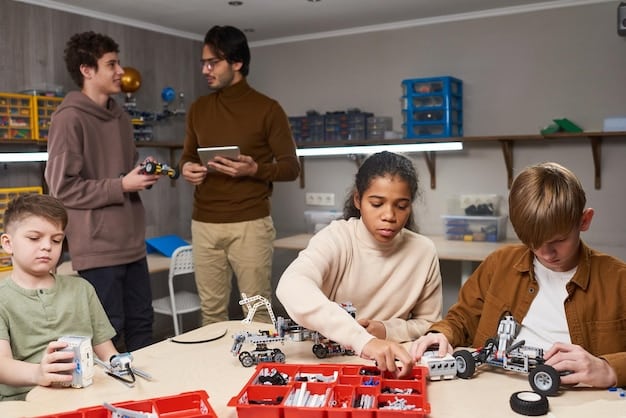
The Maker Movement in Education empowers US students through hands-on learning, fostering creativity, problem-solving, and innovation skills by engaging them in designing, building, and experimenting with real-world projects.
The Maker Movement in Education is transforming classrooms across the United States, shifting the focus from passive learning to active creation. By embracing hands-on projects and collaborative problem-solving, this movement is fostering a new generation of innovators and critical thinkers.
What is the Maker Movement in Education?
The Maker Movement is a cultural trend emphasizing hands-on creation and learning. In education, it means bringing making, building, and tinkering into the classroom to enhance learning experiences.
This approach allows students to explore subjects in a practical way, connecting theoretical knowledge with real-world applications.
Core Principles of the Maker Movement
The Maker Movement in Education isn’t just about crafting; it’s about instilling certain values and principles in students.
- Hands-on Learning: Encouraging students to learn by doing, experimenting, and creating tangible objects.
- Collaboration: Fostering teamwork and idea sharing among students.
- Innovation: Inspiring students to think creatively and develop innovative solutions to problems.
By embracing these principles, educators can create a more engaging and effective learning environment.
In conclusion, the Maker Movement in Education is a transformative approach that empowers students to become active learners and creators.
Benefits of the Maker Movement in US Schools
Implementing the Maker Movement in schools across the US brings numerous benefits that extend beyond traditional academic learning.
It prepares students for the challenges and opportunities of the 21st century by fostering essential skills and mindsets.
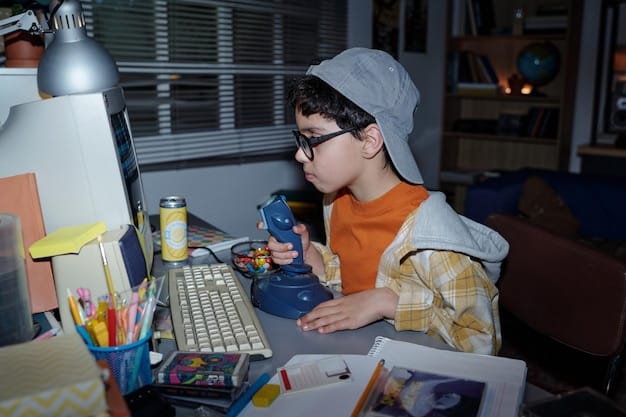
Developing Critical Thinking Skills
The Maker Movement encourages students to analyze problems, develop solutions, and evaluate outcomes critically.
This process enhances their ability to think logically and make informed decisions.
Enhancing Creativity and Innovation
By providing students with the freedom to experiment and create, the Maker Movement fosters creativity and innovation.
Students learn to think outside the box and develop novel solutions to complex problems.
Ultimately, the Maker Movement offers significant benefits to students by developing critical thinking skills and enhancing creativity and innovation.
Implementing the Maker Movement in Classrooms
Successfully integrating the Maker Movement into classrooms requires careful planning and consideration. It involves creating a conducive environment, providing necessary resources, and training educators.
With the right approach, schools can effectively harness the potential of the Maker Movement to transform learning experiences.
- Creating a Maker Space: Designating a physical space where students can access tools, materials, and technology for their projects.
- Providing Resources: Ensuring students have access to a wide range of materials, including electronics, craft supplies, and digital fabrication tools.
- Training Educators: Equipping teachers with the skills and knowledge they need to facilitate maker-based learning activities.
These strategies help schools create an effective environment for maker-based learning.
In conclusion, implementing the Maker Movement in classrooms involves creating a supportive environment, providing resources, and training educators to maximize its benefits.
Tools and Technologies Used in Maker Education
The Maker Movement leverages a variety of tools and technologies to empower students to create, innovate, and problem-solve.
These tools range from simple hand tools to advanced digital fabrication equipment, allowing students to bring their ideas to life.
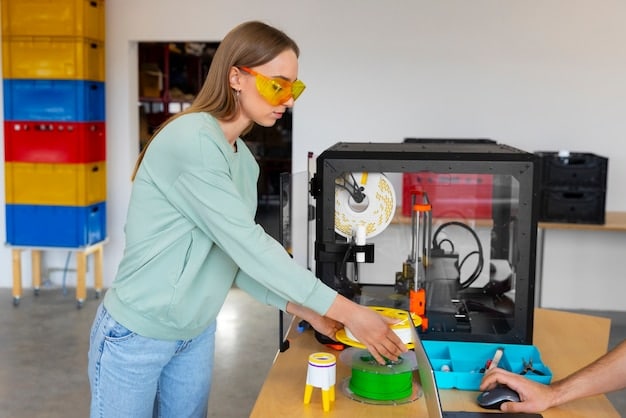
- 3D Printers: Allowing students to create three-dimensional objects from digital designs.
- Laser Cutters: Enabling precise cutting and engraving of various materials, such as wood, acrylic, and fabric.
- Microcontrollers: Providing students with the ability to program and control electronic components, such as sensors, motors, and LEDs.
Software and Platforms
In addition to physical tools, the Maker Movement also utilizes various software and platforms to support student learning and creativity.
These tools facilitate design, programming, and collaboration, enabling students to work on complex projects.
In summary, the Maker Movement utilizes a diverse range of tools and technologies to empower students to create and innovate.
Examples of Maker Projects in US Schools
Maker projects in US schools vary widely, depending on the available resources, student interests, and curriculum goals.
These projects provide students with hands-on learning experiences that connect classroom concepts to real-world applications.
Robotics Challenges
Students design, build, and program robots to complete specific tasks, fostering problem-solving and teamwork skills.
These challenges often involve competing against other teams, adding an element of excitement and motivation.
Engineering Design Challenges
Students work in teams to design and build solutions to engineering problems, such as designing a bridge or a water filtration system.
These challenges encourage students to apply their knowledge of science, technology, engineering, and mathematics (STEM) concepts.
In conclusion, maker projects in US schools provide students with hands-on learning experiences that foster creativity, problem-solving, and collaboration.
Challenges and Solutions in Maker Education
While the Maker Movement offers numerous benefits, implementing it in schools also presents certain challenges. These challenges include funding, space, and teacher training.
Addressing these challenges requires creative solutions and a commitment to supporting maker-based learning.
- Funding Constraints: Securing funding for tools, materials, and equipment can be a significant challenge for schools.
- Limited Space: Many schools lack the physical space needed to create dedicated maker spaces.
- Teacher Training: Equipping teachers with the skills and knowledge they need to facilitate maker-based learning activities requires ongoing professional development.
Creative Solutions for Overcoming Challenges
Despite these challenges, schools can implement creative solutions to support maker education.
These solutions include seeking grants, partnering with local businesses, and utilizing existing resources.
In short, while implementing the Maker Movement in schools presents certain challenges, creative solutions can help overcome these obstacles and support maker education.
| Key Concept | Brief Description |
|---|---|
| 💡 Hands-on Learning | Learning by doing and experimenting. |
| 🤝 Collaboration | Working together to share ideas. |
| 🚀 Innovation | Developing new and creative solutions. |
| 🛠️ Maker Spaces | Designated areas for making activities. |
Frequently Asked Questions (FAQ)
▼
The primary goal is to foster creativity, innovation, and problem-solving skills in students through hands-on, project-based learning experiences.
▼
Common tools include 3D printers, laser cutters, microcontrollers, robotics kits, and various hand tools, along with design and programming software.
▼
It enhances critical thinking, boosts creativity, improves problem-solving abilities, and encourages collaboration, preparing students for future challenges.
▼
Challenges include funding constraints, limited space, the need for trained educators, and ensuring equitable access for all students.
▼
Schools can seek grants, partner with local businesses, utilize existing resources creatively, and prioritize professional development for teachers in maker-based learning.
Conclusion
The Maker Movement in Education is revolutionizing how students learn by emphasizing hands-on creation and innovative problem-solving. By embracing this movement, US schools can cultivate a new generation of thinkers and doers, equipped with the skills and mindset needed to thrive in the 21st century.


